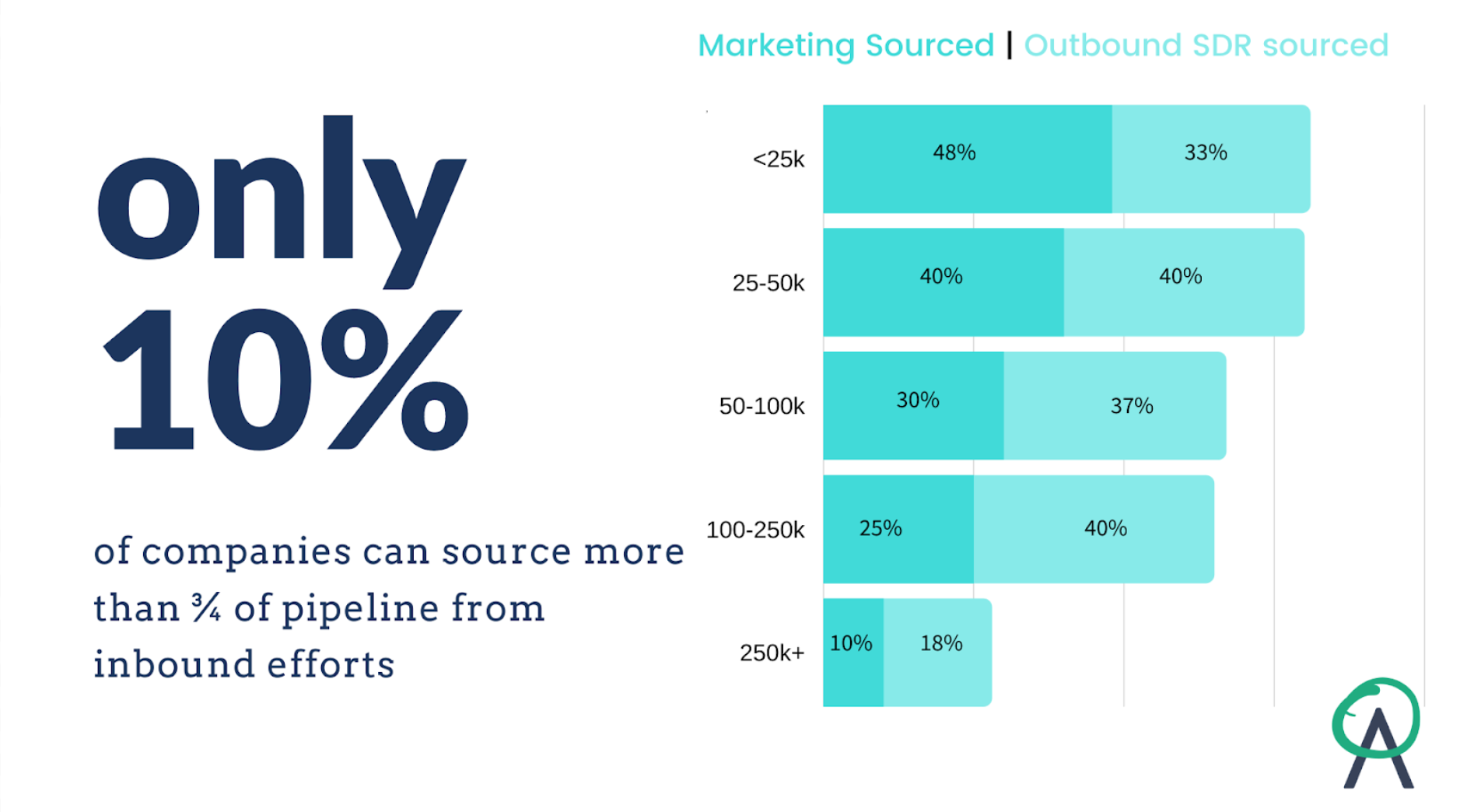What are Sales Development Representatives?
Sales development reps are sometimes referred to as SDRs or BDRs (business development reps). There are 2 specific specializations of sales development reps: Inbound and Outbound. Inbound sales development reps typically handle vetting, qualifying, and distributing inbound leads from the marketing site; whereas, Outbound sales development reps focus on outbound prospecting, “cold calling,” emailing and working to build business outside marketing leads for the sales organization. The SDR position is oftentimes considered an entry level sales position; however, high-growth sales teams heavily rely on a combination of inbound and outbound sales development reps to reach pipeline goals for their organization.
What do Sales Development Reps do?
Sales development reps focus on a combination of sales activities like phone calls, emails, social connections to drive specific objectives like introductory meetings or qualified meetings. The goal of setting introductory or qualified meetings for AEs (account executives) centers around one ultimate business goal which is closing more deals and creating revenue for the business.
The reason companies are turning to sales development as a model for their businesses is the amount of pipeline the role creates in addition to inbound marketing pipeline alone. Inbound SDRs focus on building the pipeline that comes from inbound marketing leads while outbound reps focus on outbound prospecting. If you are looking to go up-market and target more enterprise customers, outbound prospecting is essential to your strategy.

With only approximately 10% of companies sourcing more than three quarters of pipeline goals from inbound marketing efforts, it is pretty obvious why outbound sales development and the sales development representative role is becoming increasingly popular.
What are the activities and objectives that make up the sales development role?
There are a different number of KPIs and OKRs that make up the sales development representative role. When considering the metrics, it is best to think about breaking the role down into activities, objectives, and results.
Scoring SDR activities to influence productivity
The most common selling activities that outbound sales development representatives focus on are:
-
Outbound calls
-
Email prospecting
-
LinkedIn social selling
-
Asking for referrals
- Sometimes working event or webinar leads from marketing
There are a combination of quantity and quality activities to measure when looking at utilizing an outbound sales development model. Talk time and call connects may be the quality metrics while number of dials or emails sent will be the quantity. The most powerful way to leverage both quantity and quality sales KPIs in your outbound sales development model is to leverage the power of a sales scorecard. Scorecards allow you to weight the importance of the selling activities toward the more high value things like calls but still give reps "credit" for things like research or LinkedIn connections which are essential parts of the role. When you put SDR activities into a scorecard format, each rep will work to achieve a score of 100 at the end of the day, and as a manager you'll have complete visibility into the work the reps are doing. Ambition scorecards integrate with your sales engagement tools like Outreach, so dials, emails, and talk time are automatically scored.

>>>GET YOUR OWN INTERACTIVE SALES DEVELOPMENT REP SCORECARD TEMPLATE HERE<<<
Measuring SDR objectives for maximum efficiency
The primary objective of the outbound SDR role is getting meetings for your closing Account Executive team. Sometimes that may be an introductory meeting or sometimes it might be passing a fully qualified opportunity. This objective is often the model for how the SDR role is compensated as well. If your market is immature, an introductory meeting is likely the best fit whereas if your AEs have full calendars or you're in a very mature market, fully qualified opportunities may be best. Here is a look at some metrics around companies that compensate SDRs on introductory meetings vs. fully qualified opportunities:

If you apply a scorecard concept to the objectives of the sales development role similar to the activities example above, you could combine a quantity and quality approach to meetings as well. To ensure volume of meetings, you can score that but combine it with how many meetings contribute to pipeline or flip to qualified. This ensures that your sales development reps are focusing on the right ICP and booking a high volume of meetings but also with enough quality that they are more likely to convert further down the sales funnel. Here is a look at an SDR objective scorecard example that the Ambition team uses:

What tech stack powers the Sales Development role?
Our outbound sales development team relies heavily on a combination of Outreach for sales engagement and our own platform for gamification, coaching, and sales performance management. We use other tools like G2 for sales intent data, and LinkedIn Sales Navigator for prospecting. While you can get carried away with an overly complex (and overly expensive) tech stack, you'd be surprised what you can do with a CRM, Outreach, and Ambition. Your AE tech stack may look pretty similar but with the addition of a conversation intelligence tool like Gong or Chorus.

How does Ambition use Ambition + Outreach to build record breaking pipeline?
Want to see how our sales development team leverages Ambition and Outreach to drive record breaking pipeline? Check out the recording of our webinar here:
 Back
Back



